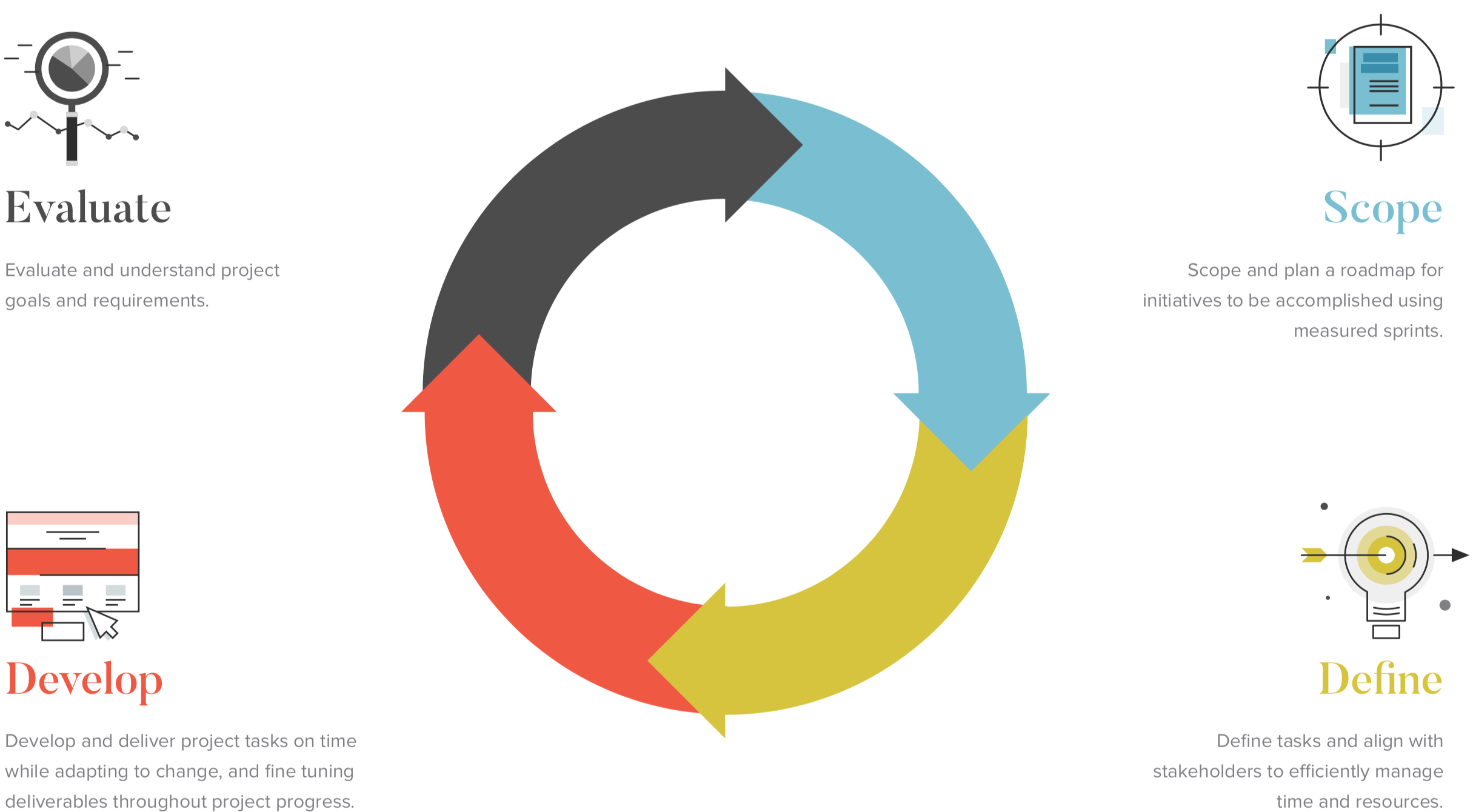 Managing projects with multiple teams and cross-functional dependencies can be challenging, especially when limited time and budget come into play. The initial plan from start to finish is often influenced by several variables that can impact what was planned. Instead of going back to the starting line, teams have to learn how to manage change and find solutions while successfully completing goals. This is where agile project management comes in.
Managing projects with multiple teams and cross-functional dependencies can be challenging, especially when limited time and budget come into play. The initial plan from start to finish is often influenced by several variables that can impact what was planned. Instead of going back to the starting line, teams have to learn how to manage change and find solutions while successfully completing goals. This is where agile project management comes in.
Agile project management applies an iterative approach to project planning. Project managers focus on a flexible format to effectively complete projects and manage resources to achieve project and business goals. Teams can complete deliverables incrementally throughout a project’s life cycle and coordinate daily. At its core, agile project management is about focusing on smaller sections known as ‘sprints’ to complete project tasks. It provides room for continuous improvement and the flexibility to manage and resolve issues as they arise.
The primary values that drive the success of an agile project are trust and flexibility. Teams are empowered to collaborate to improve a project’s success at each stage without hindering the overarching goals.
Continuous Improvement Throughout Project Lifecycle
Agile project management is about breaking down projects into smaller sections structured as sprints from the initial concept phase to scoping, design, development, and quality assurance (QA). Sprints are defined by a select group of tasks subject to a short timeframe and effectively deploy solutions. The progress of a project is marked by each sprint, enabling teams to communicate resource alignment and future planning.

The primary factor of agile project management is response time. By resolving issues quickly, teams can save resources and deliver a project within a set schedule and budget.
As a result, teams can perform tasks with measured success and more excellent knowledge to drive a project through to completion. Each sprint allows the team to complete planned tasks while simultaneously adapting to changing needs.
Below is an example graphic showcasing the agile project management process used by the Convertiv team. Each stage follows a continuous, measurable path used to manage obstacles without halting a project or hindering its goals.

Key Principles
- Deliver primary project tasks continuously
- Utilize change as an advantage for the customer’s competitive edge
- Apply shorter timeframes for deliverables (days, weeks)
- Centralize projects around motivated team members and daily team coordination
- Fine-tune deliverables throughout a project’s progress
- Apply attention to technical and marketing excellence
Outcomes & Benefits
- Efficient use of resources
- Increased flexibility, collaboration, and transparency
- Effective deployment of solutions
- Adaptability to changing needs
- Fast detection of issues, and in turn, quick fixes
- Cross-functional team skills
 Managing projects with multiple teams and cross-functional dependencies can be challenging, especially when limited time and budget come into play. The initial plan from start to finish is often influenced by several variables that can impact what was planned. Instead of going back to the starting line, teams have to learn how to manage change and find solutions while successfully completing goals. This is where agile project management comes in.
Managing projects with multiple teams and cross-functional dependencies can be challenging, especially when limited time and budget come into play. The initial plan from start to finish is often influenced by several variables that can impact what was planned. Instead of going back to the starting line, teams have to learn how to manage change and find solutions while successfully completing goals. This is where agile project management comes in.
